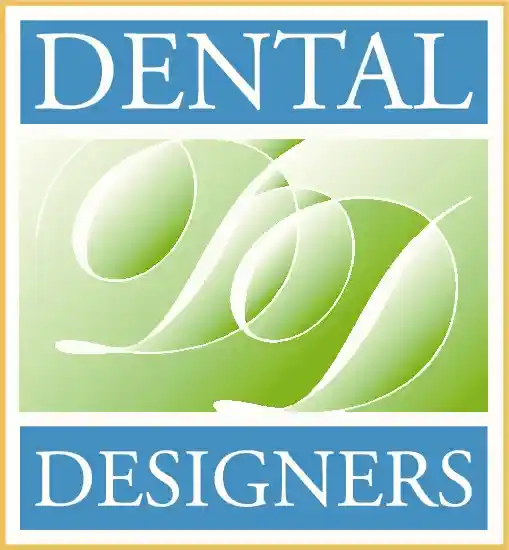How Can I Get Rid of Stains On My Teeth?
Teeth stains impact everyone but are more prevalent in people who smoke or consume certain drinks. So, stains on your teeth are one of the reasons you are not getting bright teeth. There are various ways to get rid of stains. This article will discuss different ways to help you get the stains off your teeth and maintain your dental health. Whether it is yellow teeth, brown stains, or any other type of stain on your teeth, this article has helpful tooth-whitening information, and you can learn how to remove stains safely here.
So, if you want to know how to whiten teeth at home naturally, here’s how to remove teeth stains naturally. If you know the types of stains and the best removal process, you can improve the appearance of your teeth, and then you will not feel shy about your smile and will be more confident about it! Read on for more about how to safely and effectively whiten your teeth.
Common Types of Teeth Stains
Regarding the type of stains on your teeth, it is essential to note that there are two types. Tooth Stains The 2 Types of Tooth Stains, Extrinsic and Intrinsic Stains, are attached to the tooth’s surface and can occur from foods and drinks such as coffee, tea, red wine, and soda. These can be brushed off more quickly and even whitened away.
Intrinsic stains are embedded much deeper in the tooth enamel. Stains that take place from the likes of aging, an excessive amount of, or certain drugs and medicines. Intrinsic stains, however, are more challenging to eliminate and often need the intervention of teeth whitening treatments to ensure their removal.
You can then choose a tooth-whitening method to work on the stains once you know what type of stains are on your teeth. You can whiten your teeth if they are stained on the surface or if they are stained deeply, making them look whiter.
The Best Way to Remove Stains from Teeth
Unfortunately, there is no universal answer as to the best way to clean stains from your teeth since it depends greatly on the type of stain and how set in it is. Whitening toothpaste is a reasonable option for mild surface stains. Whitening toothpaste contains ingredients like baking soda and hydrogen peroxide that work to remove stains from the surface of your teeth. Regular brushing with this toothpaste can help whiten teeth and diminish yellow stains caused by food and drink.
If you have tooth stains that are deeper than you can clean, a professional teeth whitening treatment from your dentist may be the ideal solution for eliminating tooth stains. These treatments use more potent bleaching agents that can penetrate the enamel to break down deep stains and whiten the shade of your teeth. A dentist can tell you if professional whitening is right for you.
You also want to keep a good dental regimen, making sure you brush your teeth regularly and floss too, to get rid of plaque. Regular dental check-ups may help remove the stains and maintain the health of your teeth.
Professional Teeth Whitening Options
Intense stains might need professional teeth whitening. Researchers have shown whitening solutions that can be done in a dental office, such as the in-office whitening procedure, which uses a special whitening gel activated by light. It is thought to have instant effects and is best for people with heavily stained teeth.
Another professional option is dentist-furnished home whitening kits. These kits include a whitening gel and custom-fit trays you use at home. Results take a little longer, but it’s an effective method that lets you whiten your teeth on your terms.
If you are considering having one of the professional teeth whitening methods performed, consult your dentist to decide which technique would be best for you. Professional whitening can remove stains that your OTC products can’t. Broccoli can help you achieve the bright-white smile you have always wanted.
Whitening Your Teeth with Baking Soda
Sodium bicarbonate, or Bicarbonate of soda, is a common ingredient in many at-home teeth-whitening products. It is mildly abrasive and removes blemishes on the surface of your teeth left behind from food, drinks, or tobacco. This way, you could apply a bit of baking soda with a touch of water, convert it into a paste, and gradually get your teeth whitened most naturally.
Whitening your teeth with baking soda is the same as using it as a toothpaste; you simply take some of the paste and scrub your teeth back and forth for a few minutes. However, moderation is needed, as too much baking soda can make the tooth enamel wear.
Baking soda is an excellent buffer for removing yellow patches from the teeth and preventing them from forming plaque that makes teeth yellow. This is best for surface stains, though, and likely won’t reach deep stains from age, smoking, etc. If you want whiter teeth, have professional teeth whitening treatments.
Removing Brown Stains from Teeth
Brown marks on the surface of our teeth are incredibly stubborn and resistant to removal. This is particularly true for stains caused by foods, drinks like coffee or tea, and habits like smoking. While surface marks can be scrubbed off, brown marks might require additional treatment to be obliterated.
In general, a whitening toothpaste or treatment that contains hydrogen peroxide will help remove brown stains. Hydrogen peroxide can be a natural bleaching agent and help whiten the stains on the surface of your teeth. A small amount can be used in addition to your regular brushing or as a rinse to deal with stains on your pearly whites.
But if you have nasty brown stains, visiting the dentist is better. Professional teeth whitening will effectively treat these kinds of stains—your teeth look cleansed and brightened.
Preventing Stains on Your Teeth
Avoiding stains on your teeth as much as removing them is essential. The best prevention is to maintain a good oral hygiene routine. Be sure you brush your teeth twice daily with toothpaste that whitens and removes plaque. Plaque can build up between teeth, increasing the risk of staining, so flossing regularly (ideally once daily) can help prevent some of this.
It’s also when you know your foods and drinks. Consuming coffee, tea, and soda can stain your teeth over time, so drink these sparingly. If you eat staining foods or beverages, immediately rinse your mouth with water afterwards to mitigate the damage.
Quit smoking; the best measure to prevent nicotine stains from settling on the teeth. Regular visits to your dentist for cleanings can prevent those stains from setting in, and bleaching agents can combat yellowness, thus keeping them healthy and pasted all with a bright smile.
The Role of Enamel in Teeth Stains
The appearance of your teeth largely depends on your tooth enamel. The hard outermost layer of your teeth protects them from damage and decay: Enamel. Enamel can wear over time due to age, food, drinks, etc. When enamel wears away or is damaged, the dentin underneath becomes exposed, making teeth look discolored or stained.
To keep your enamel intact and avoid stains from adhering in the first place, you need to use gentle oral care products. Is anything too extreme, like abrasive toothpaste or teeth-whitening methods that strip the enamel? But brushing your teeth using fluoride toothpaste strengthens your enamel and could reduce damage to the surface.
If you’re interested in restoring the health of your enamel and the color of your teeth because you see discoloration or staining caused by enamel wear, conversing with your dentist about your options is a good place to start.
Talking to Your Dentist About Tooth Whitening
If you’re managing stains on your teeth that you cannot brush off, it may be time to consult your dentist. Your dentist can determine the source of your tooth stains and recommend the best action to remove them. If the stains are due to extrinsic factors like food and drinks, your dentist will recommend whitening treatments to remove them.
For intrinsic stains, your dentist may recommend more powerful professional whitening treatments to address the deep stains. Your dentist can also advise on brightening your newly whitened dentition and preventing your stains from reappearing.
And if you’re concerned about the health of your teeth or how whitening treatments will affect your enamel, your dentist can help you determine the safest options.
Conclusion
So, in short, stains on your teeth can be eliminated. Whether you’re facing surface stains or deeper discoloration, there are plenty of options for whitening your teeth and restoring your smile. Teeth can be stained in several ways, and regular brushing with whitener-centric toothpaste and professional whitening services can help. Prevention is key, so good dental hygiene and avoiding foods and drinks that stain your teeth will help brighten your smile. If you are unsure which method of removing stains is best, ask your dentist about an effective solution to your problem.
So here you have it, the key takeaways: brush your teeth regularly to remove surface stains, use a whitening toothpaste, consider a professional teeth whitening procedure for particularly deep-set stains, and avoid stains in the first place. With these tips, you can ensure your teeth stay white for as long as possible.

